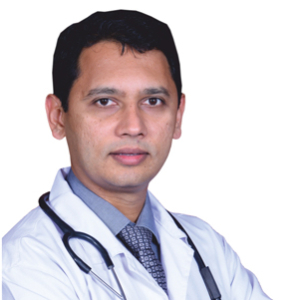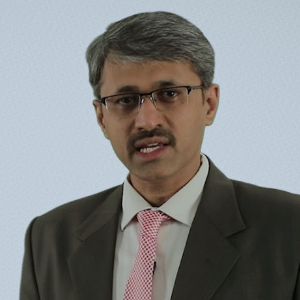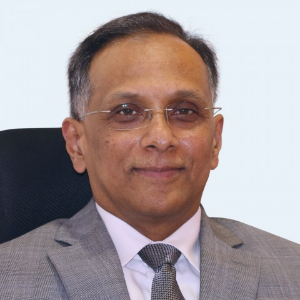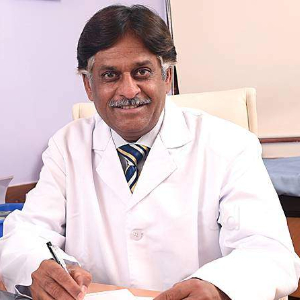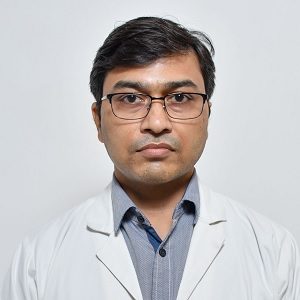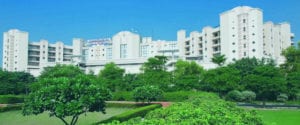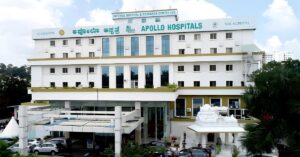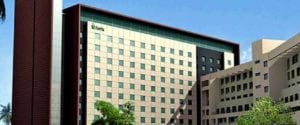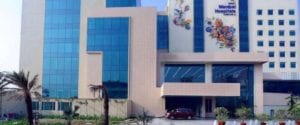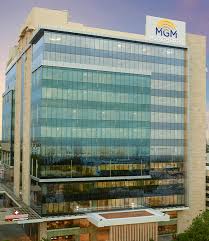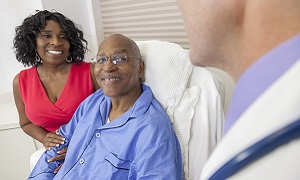Best VP Shunt Doctors in India
- Neurosurgeon, Bengaluru, India
- Over 22 years’ experience
- Gleneagles Global Hospital Bengaluru
Profile Highlights:
- Dr. Madhusudan H V is an expert Neurosurgeon in South India with 22+ years of experience in neuro and spine surgery.
- With a specialization in minimally invasive neurosurgeries, Dr. Madhusudan holds the credit for more than 7000 neurosurgeries. He also finds interest in endoscopic interventions and frameless navigations.
- Neurosurgeon & Spine Surgeon, Bengaluru, India
- Over 20 years’ experience
- Fortis Hospital Banerghatta Bengaluru
Profile Highlights:
- Dr. Prahraj S S is a leading Neurosurgeon who specializes in all types of neurological surgeries and has performed over 6000 neurosurgeries till date along with complex cranial and spine surgeries.
- He is one of the most renowned neurosurgeons in the country and has provided his services to some of the premier medical institutes in India such as NIMHANS where he performed a large number of spinal surgeries.
- Neurosurgeon & Spine Surgeon, Bengaluru, India
- Over 15 years’ experience
- Gleneagles Global Hospital Bengaluru
Profile Highlights:
- Dr. Praveen K S is a highly qualified neurosurgeon with over a decade of experience in handling all kinds of neurological diseases and disorders.
- He specializes in Pediatric Neurosurgery, Neuro-Oncology, Endoscopic neurosurgery, Aneurysms, and Neuro- Trauma and has performed over 4000 neurosurgeries in his career.
- Neurosurgeon & Spine Surgeon, Mumbai, India
- Over 20 years’ experience
- Wockhardt Hospital Mumbai
Profile Highlights:
- Dr. Rahul Modgi is a highly established neuro and spine surgeon in Mumbai specializing in all types of brain and spine surgeries.
- Dr. Rahul Modgi’s name has been recorded in the Limca Book of Records in 2014 when he removed the heaviest iron rod from the brain of a 17-year-old patient. He has also performed various other risky surgeries for which he has greatly appreciated.
- Neurosurgeon, Bengaluru, India
- Over 30 years’ experience
- Fortis Hospital Banerghatta Bengaluru
Profile Highlights:
- Dr. Rajakumar V Deshpande is a renowned Neurosurgeon in Bengaluru. He performed the first pedicle screw fixation surgery for a spine injury in Bangalore.
- Dr. D V Rajakumar specializes in endoscopic neurosurgeries and has performed some of the most complex brain and spine surgeries through the endoscopic approach. His other areas of interest include minimally invasive neuro surgeries, management of cerebrovascular diseases, and brain tumor surgeries.
- Neurosurgeon, Mumbai, India
- Over 20 years’ experience
- Gleneagles Global Hospital Parel Mumbai
Profile Highlights:
- Dr. Suresh Sankhla is an accomplished Neurosurgeon in Mumbai specializing in endoscopic neurosurgery and onco-neurosurgery.
- Dr. Sankhla acquired his training in neurosurgery under the guidance of the best trainers from well-known medical institutes and hospitals in Ireland, UK, USA as well as India.
- He has an equal interest in research and has published more than 100 articles, papers, and abstracts in renowned national and international peer-reviewed journals.
- Neurosurgeon, Gurugram, India
- Over 25 years’ experience
- Artemis Hospital, Gurgaon
Profile Highlights:
- Dr. Pawan Goyal is a renowned neurosurgeon in Gurugram with 25 years of experience.
- He gained expertise in endoscopic neurosurgery, minimally invasive spine and neurosurgery, all brain and spine tumors, head and spine injuries.
Best VP Shunting Hospitals in India
Hospital Highlights:
- Apollo Hospitals is a private healthcare group in India, with its headquarters based in Chennai. Established in 1983 by Dr. Prathap C. Reddy, the group offers a wide range of medical treatments and services across various specialties.
- It is renowned for emphasizing innovation and utilizing cutting-edge medical technologies into patient treatment.
- Known as India’s first corporate hospital, Apollo Hospitals is often credited for pioneering the private healthcare revolution in the country.
- With clinics and hospitals located all throughout India, Apollo Hospitals is a nationwide healthcare organization. Its presence can also be found in foreign countries.
- Preventive health examinations, medical and surgical treatment, and diagnostic centres are just a few of the services that the Apollo group provides.
- The group has several centres of expertise, including Cardiac Sciences, Neurosciences, Orthopedics, Emergency Care, Cancer Care, and Organ Transplantation.
- City: Chennai, India
Hospital Highlights:
- RIMC is a multi-specialty hospital in a sprawling area of 36 acres located in Chromepet, Chennai, Tamil Nadu, India.
- The facility has 450 beds including 130 critical care beds, 9 operating rooms, modern reference laboratories and radiology services, and is conveniently located near road, rail and air transportation.
- RIMC is led and managed by world-renowned physicians committed to healthcare.
- RIMC offers the broadest range of clinical care, education, and research. The hospital offers state-of-the-art technology and modern treatment facilities designed to provide health care at an affordable cost.
- Rela Institute is driven by patient needs, comfort and confidence.
- City: New Delhi, India
Hospital Highlights:
- Fortis Hospital in Shalimar Bagh is a multi-super specialty hospital that strives to provide world-class patient care by leaving no stone unturned.
- Fortis, Shalimar Bagh, with 262 beds and a 7.34-acre footprint, provides the best level of medical care through its team of doctors, nurses, technicians, and management professionals.
- City: Bengaluru, India
Hospital Highlights:
- Established in 2007, the Apollo Hospitals Bangalore is a 300-bed multispecialty hospital situated in Bannerghatta Road, Bangalore.
- Equipped with the state-of-the-art technology, it is a leading hospital dedicated to providing healthcare needs to patients with compassion and expertise.
- It is the first hospital to have completed the highest number of Robot Assisted Heart Surgeries in India.
- Over the years, it has successfully conducted some of the rarest medical procedures such as spinal angiolipoma excision, autologous chondrocyte implantations, and tibial tuberosity shift with MPSL reconstruction.
- The Apollo Hospitals Bangalore has the reputation of performing the greatest series of airway stents in the country.
- Additionally, the hospital is known for providing comprehensive treatment in specialties such as gastroenterology, urology, gynecology, oncology, colorectal surgery, etc.
- The “The Minimal Access Surgery Centre” (MASC), one of Apollo Hospitals, Bangalore’s premier Centres of Excellence, is devoted to the use of minimally invasive surgical procedures.
- In 2013, THE WEEK-A C Nielsen, Best Hospital Survey ranked Apollo Hospitals Bangalore as the 2nd best multi-speciality hospital in Bangalore.
- City: Mumbai, India
Hospital Highlights:
- Gleneagles Global Hospital The 450-bed facility comprises of 17-stories, housing state-of-the-art infrastructure, and advanced medical care facilities.
- The hospital offers end-to-end clinical, surgical, and diagnostic services. It is equipped with a team of eminent medical professionals aided by qualified nurses and medical staff
- The Hospital offers advanced Endoscopic procedures, Hepatobiliary and Liver Surgeries, Surgical and Medical Gastroenterology, Bariatric Surgery, and Robotic surgery.
- The hospital is a center of excellence for Orthopedics, Joint Replacement, Knee Replacement, and Hip Replacement surgery.
- City: Hyderabad, India
Hospital Highlights:
- CARE Hospitals were established in the year 2000, by CARE Group.
- The multispecialty hospital has 435 beds, including 120 critical care beds, with an annual inflow of 180000 outpatients and 16,000 in-patients.
- The hospital provides specialty medical services in Cardiology, Cardiothoracic Surgery, Pediatric Cardiology, Pediatric Cardiothoracic Surgery, Neurology, Neurosurgery, Nephrology, and Urology.
- The hospital has the first dual source, 128 slice CT scanner (for high precision cardiac imaging) – the first of its kind in south India.
- The hospital offers a wide range of accommodation facilities for the convenience of its varied patient base, ranging from general wards to super deluxe rooms.
- City: Mumbai, India
Hospital Highlights:
- Fortis Hospital in Mulund is a 315-bed multi-speciality tertiary care hospital with five JCI accreditations that offers a wide variety of diagnostic and treatment services. The Fortis Hospital in Mulund delivers patient-centred treatment with cutting-edge technology, highly skilled and experienced surgeons, and paramedical staff.
- This institution houses Maharashtra’s largest multi-organ transplant centre. It is also the first heart transplant centre in western India to conduct 100 or more consecutive heart transplants in under four years. It is the only hospital in the city to have multi-organ transplants and has handled the youngest patient for angioplasty. Fortis Hospital Mulund now boasts the first advanced surgical robot in central Mumbai.
- Cardiology and heart surgery, urology, nephrology, neurosciences, orthopaedics, digestive care, emergency and critical care, and maternity care are among the services provided by the hospital.
- City: New Delhi, India
Hospital Highlights:
- Manipal Hospitals, Dwarka, is a super-specialty hospital in Dwarka, New Delhi, which is a part of Manipal Hospitals Group.
- The hospital aims to provide the best treatment on par with international standards at a fraction of the cost.
- Equipped with 380 beds, the hospital is also one of the new age hospitals which are equipped fully with state-of-the-art infrastructure, cutting-edge technology as well as the latest and advanced clinical practices. The hospital also has 13 modular Operation theatres with 118 beds which are solely meant for critical care.
- The hospital comprises internationally acclaimed doctors and highly professional and experienced hospital and medical staff who are able to provide preventive, therapeutic, and diagnostic services all under one roof.
- City: Chennai, India
Hospital Highlights:
- Located in Chennai, India, MGM Healthcare is a top multispecialty hospital that provides all medical services under one roof.
- Since its founding in 2019, MGM Healthcare has quickly become a leading national referral centre, creating several innovative flagship initiatives.
- MGM Healthcare combines next-generation medical and digital technologies to provide better patient results.
- With 12 centres of excellence, more than 400 inpatient beds, 100 intensive care unit beds, and 24/7 emergency care, MGM Healthcare leaves no chance in redefining the patient experience in Chennai.
- MGM Healthcare boasts 250+ expert doctors across 30+ departments, including Cardiology, Pulmonology, Neurology, Obstetrics & Gynaecology, and more.
- They house 12 specialized Centres of Excellence, including Neurosciences, Orthopaedics, and Multi-Organ Transplantation.
- Their team of doctors, nurses, and paramedics works together to give every patient individualized treatment.
Hospital Highlights:
- Lilavati Hospital & Research Centre is India’s premier multi-speciality tertiary care hospital and has been recognised as a global medical excellence centre.
- Lilavati Hospital & Research Centre has built an unrivalled level of trust with its patients over the years, thanks to a solid foundation that comprises cutting-edge facilities, the best medical competence, research, education, and charity endeavours.
- The hospital is quite proud of the fact that it now serves patients from all kinds of backgrounds, not just from the United States but from all around the world.
- The hospital has a total of 323 beds, one of the largest Intensive Care Units (ICUs), 12 Operation Theatres with modern amenities, over 300 consultants, and almost 1,800 personnel.
VP Shunt
VP shunt or ventriculoperitoneal shunt is a medical device which doctors use for treating hydrocephalus, a brain condition. The device can relieve pressure on the brain caused by fluid accumulation.
Hydrocephalus occurs when excess cerebrospinal fluid collects in the ventricles of your brain. This fluid cushions the brain and protects it from any skull injury inside. The fluid also acts as a delivery system for nutrients required by your brain and it also helps in taking away any waste product. Normally, this fluid flows through these ventricles to the base of your brain. After this, the fluid bathes the brain and spinal cord before it is reabsorbed into the blood.
When this normal flow gets disrupted, harmful pressure is created on the tissues of your brain, due to the buildup of excess fluid. This can lead to brain damage. VP shunts are therefore used by doctors, which they place inside of the brain’s ventricles to divert the fluid away from the brain so that normal flow can be restored.
Purpose
People of any age might develop hydrocephalus, due to which they might require a VP shunt. However, it is known to occur more in babies than adults. Hydrocephalus, which occurs when excess fluid builds up around the brain, occur due to several reasons such as overproduction of cerebrospinal fluid, poor absorption of cerebrospinal fluid by the blood vessels and any blockage preventing fluid from flowing throughout the brain. Blockages are usually the most common cause of hydrocephalus.
Preparation
Before the procedure, your doctor might recommend the following:
- Stopping consuming alcohol, as this might affect surgery and recovery
- Avoiding any herbal remedies or supplements
- Stopping taking vitamin E, as it may lead to bleeding
- Discussing any existing medication, as you might need to stop taking some before your surgery
- Discussing any heart devices and results of any tests for heart conditions
- Discuss if you have any allergies
- Stop smoking
On the night before your surgery, it is recommended that you don’t consume any food after midnight.
Procedure
Before the procedure to fit the VP shunt, you will receive a general anesthetic and therefore you will be unconscious during the procedure. Once you are fully asleep, a small hole in your skull will be drilled through an incision behind the ear.
They will thread one catheter into your brain through this opening. The other one will go behind your ear and is subcutaneous, which means it resides under the skin.
This tube then travels down to the chest and abdomen, allowing any excess cerebrospinal fluid to drain into the abdominal cavity, where it is absorbed by the body. Your surgeon might then attach a tiny pump to both the catheters. This may be then placed under the skin behind the ear.
When the pressure in the skull increases, this pump will automatically activate to remove any fluid. It also may even be possible to program the pump also called a valve, to activate when there is a certain volume of increase in the fluid.
Aftercare
You might experience a mild headache after the surgery. In such a case, the doctor will give pain medications.
Eating normally straight after the surgery might not be possible. A patient might need to start with liquids and eventually move to solid foods slowly.
During your follow-up visit, your doctor will be removing your stitches. In the meantime, it is important to keep the stitches clean and also check for any signs of infection every day.
The doctor will remove a person’s stitches during a follow-up visit. In the meantime, it is important to keep the incisions clean and also check for any sign of infection. Redness, swelling and fluid leakage might be signs of an infection.
It is important to consult with your doctor before you are able to start showering again. The doctor will also advise you when you will be able to resume your normal daily routine.
Results
For most people, a VP Shunt is able to successfully reduce any pressure in their brains. It takes several years before they require any replacement. For small children, the average lifespan of a shunt is two years. Adults and children over the age of 2 usually do not need a replacement for 8 or more years. However, the shunt systems need to be monitored frequently.
Risks and complications
The procedure for a VP Shunt has few risks. Some people can experience adverse effects due to the general anesthesia, such as breathing problems or changes in heart rate or blood pressure.
Although rare, sometimes a VP shunt can stop working correctly and require replacement. The following signs can indicate that the device may not be working as it should:
- redness or swelling where the catheter passes under the skin
- vomiting without feeling very nauseous
- loss of coordination or balance
- a persistent headache
- extreme fatigue
- trouble staying awake
- feeling of irritation
If a VP shunt stops working correctly, it is possible for it to over-drain or under-drain cerebrospinal fluid. If the pump drains cerebrospinal faster than the body produces it, it can lead to a brain hemorrhage. If the pump does not drain cerebrospinal fluid quickly enough, the symptoms of hydrocephalus will likely return.
It is also possible for the VP shunt to get infected. Signs of infection can include:
- redness or swelling where the catheter passes under the skin
- pain around the catheter
- a headache
- high fever
If you see any sign of infection, it is important to see a doctor immediately.
FAQs on VP Shunt
How long does a VP shunt last?
VP shunts can last as long as for 35 years.
Can a VP shunt be removed?
VP shunt can be removed, once the shunt has been proven to be unnecessary.
How long does it take to recover from shunt surgery?
Recovery from a VP shunt placement takes 3-4 days. Most people can leave the hospital within seven days after the procedure.

